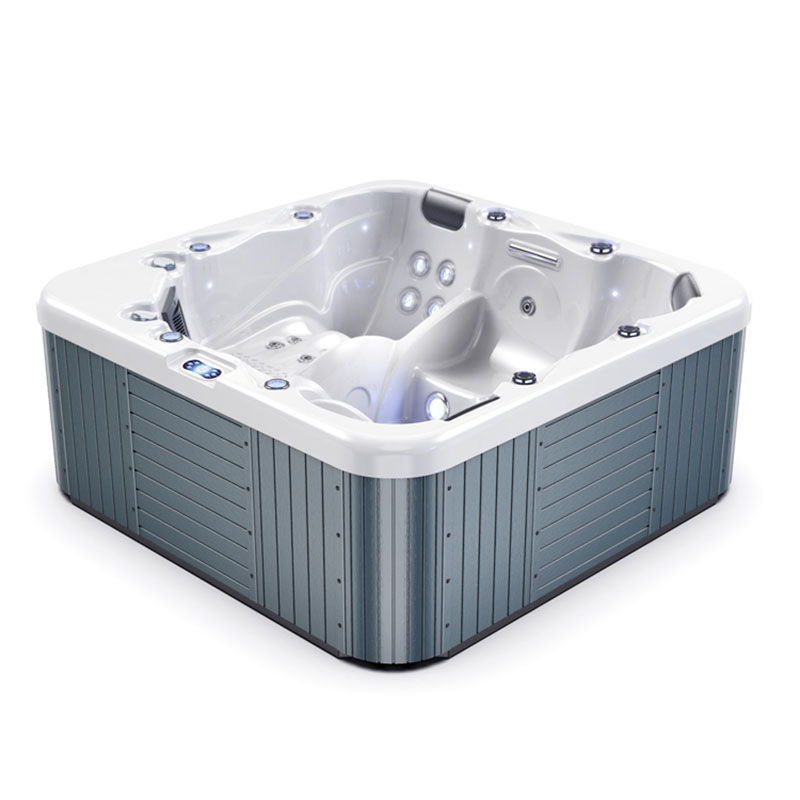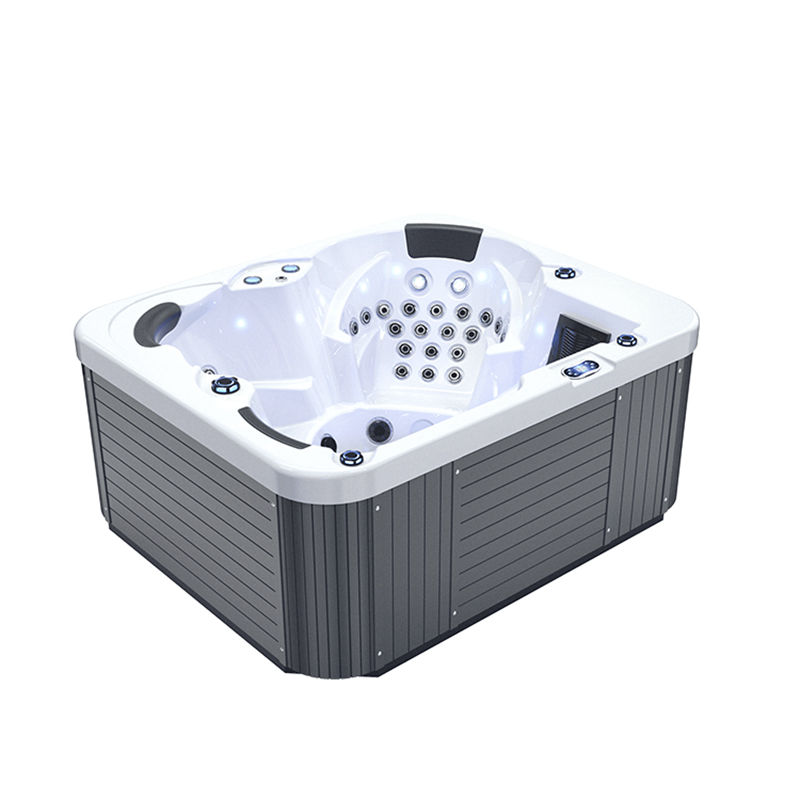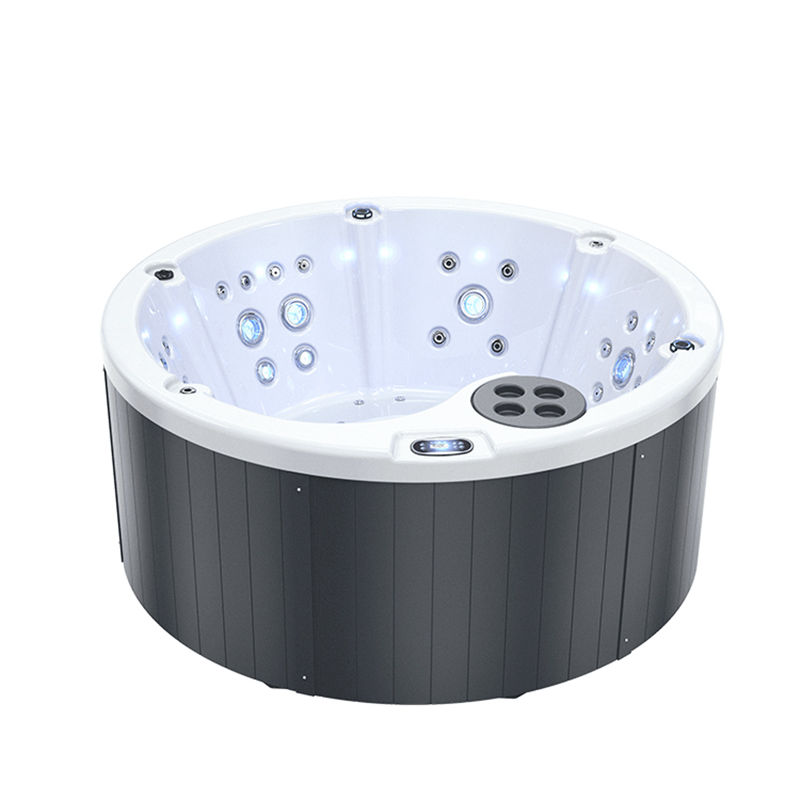The whirlpool spa hot tub is an ideal choice for modern people to relax and relieve stress. It combines warm water and water flow massage to allow users to experience deep comfort in a short time. As people's awareness of health continues to increase, some issues about the chemicals in the whirlpool spa hot tub have gradually become the focus of discussion, especially the use of chlorine and its impact on the human body.
As a common disinfectant, chlorine plays an important role in whirlpool spa hot tubs, but at the same time, people are also worried about whether soaking in chlorinated hot water for a long time will cause chlorine to enter the body through the skin or breathing, which will have adverse effects on health.
This article will focus on the question of "Will my body absorb the chlorine in the whirlpool spa hot tub?" and conduct an in-depth discussion. It will answer this highly concerned health topic from the aspects of the characteristics of chlorine, the chlorine content in the whirlpool spa hot tub, and the potential impact of chlorine on the human body.

What is chlorine?
Before discussing whether the human body absorbs chlorine in a whirlpool spa hot tub, we first need to understand what chlorine is and why it is widely used in water treatment systems, especially in whirlpool spa hot tubs, swimming pools and other facilities.
1. Characteristics of chlorine
Chlorine is a yellow-green gas with the chemical symbol Cl and a strong pungent odor. As a strong oxidant, chlorine can effectively kill pathogenic microorganisms in water, such as bacteria, viruses and algae. Therefore, chlorine is widely used in water treatment systems as a disinfectant to keep the water clean.
What is the role of chlorine in a whirlpool spa hot tub?
The water temperature in a whirlpool spa hot tub is usually high, and the humid and hot environment is prone to the growth of microorganisms, which makes the maintenance of water quality an important challenge. In order to prevent the growth of microorganisms such as bacteria and algae, chlorine as a disinfectant can effectively sterilize and maintain the cleanliness of the water to prevent users from being exposed to harmful germs. Chlorine can react with organic matter in the water to inhibit the growth of harmful germs, thereby ensuring the safety of bathtub users.
1. Different forms of chlorine
In a whirlpool spa hot tub, chlorine is usually present in two forms: free chlorine and combined chlorine. Free chlorine is chlorine that has not reacted with other substances. It has a strong disinfecting effect. Combined chlorine, on the other hand, is the product formed by chlorine combining with pollutants in the water. It has a weaker bactericidal effect, but it is still irritating. The pungent smell that users experience in a whirlpool spa hot tub usually comes from combined chlorine.
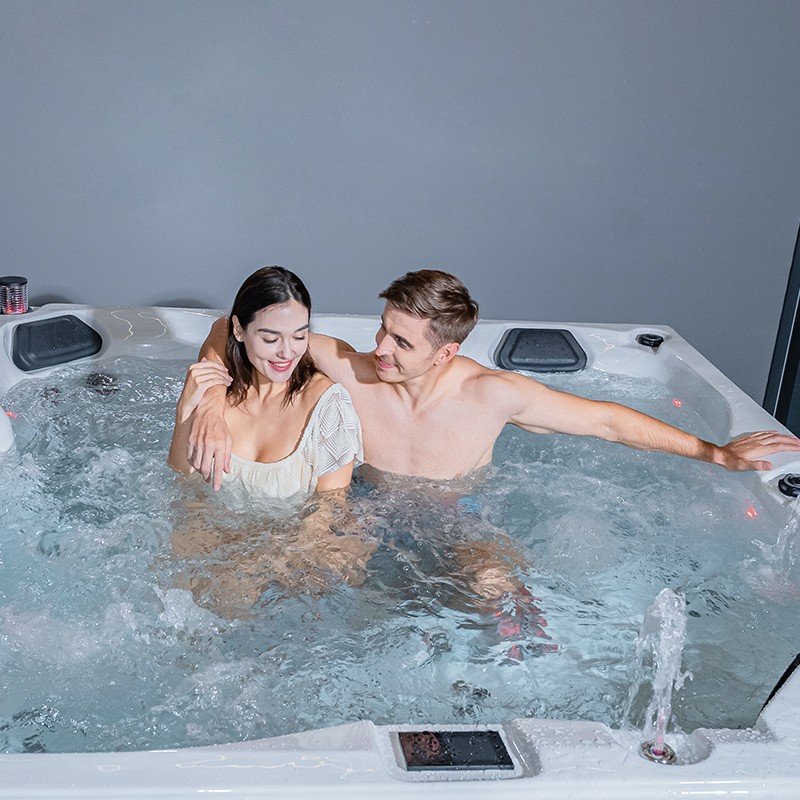
How does the human body contact and absorb chlorine?
As to whether the human body absorbs chlorine in a whirlpool spa hot tub, the answer is yes, but this absorption occurs through different pathways. Specifically, the human body may contact and absorb chlorine in the following ways:
1. Absorption through the skin
The skin is the largest organ of the human body. It has a certain protective barrier function, but the skin will still absorb some chlorine when immersed in chlorinated water for a long time. Hot water causes the pores to expand, which increases the skin's absorption capacity, which means that chlorine and its derivatives (such as chloramines) may be absorbed through the skin when soaking in a whirlpool spa hot tub.
Studies have shown that the amount of chlorine absorbed through the skin depends on the concentration of chlorine, the duration of immersion, and the individual's skin sensitivity. Although the amount of chlorine absorbed in a short period of time is small, prolonged exposure to chlorinated hot water may increase the total amount absorbed.
2. Inhalation through the respiratory tract
In addition to skin absorption, chlorine may also enter the human body through the respiratory tract. Since chlorine is a gaseous substance, when heated in hot water, chlorine gas easily evaporates and mixes into the air. When people breathe in a whirlpool spa hot tub, they may inhale small amounts of chlorine gas and chlorination byproducts, especially in a closed or poorly ventilated environment.
Under high temperature and water agitation, the chlorine in the whirlpool spa hot tub evaporates faster, and the concentration of chlorine gas in the air may increase, which increases the risk of chlorine inhalation through the human body.
3. Ingestion through drinking water (rarely occurs)
Although it is less common, chlorine may also enter the human body through the digestive system if chlorinated water is accidentally drunk in a whirlpool spa hot tub. This usually happens to children or adults who accidentally splash water into their mouths. However, the amount of chlorine ingested through this route is usually minimal.
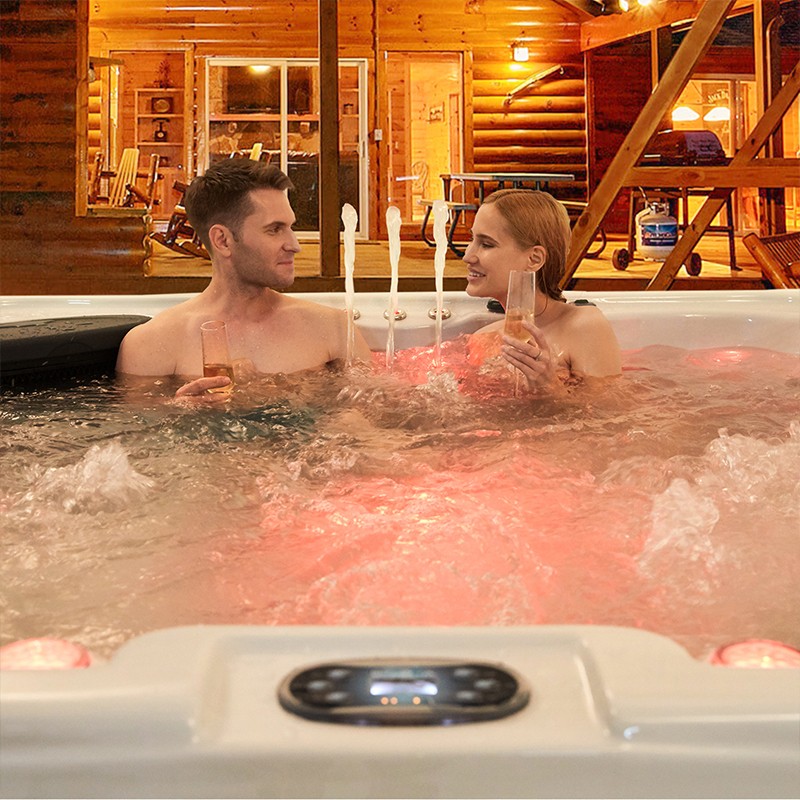
What are the effects of chlorine entering the human body?
After understanding the absorption pathway of chlorine, we need to further explore what health effects chlorine will bring after entering the human body. In general, as a common disinfectant, chlorine is less harmful to the human body when its concentration is within a controlled range. However, long-term exposure to high-concentration chlorine environments or frequent contact with chlorine may cause some health problems.
1. Skin irritation and allergic reactions
Long-term soaking in chlorinated water may cause dry skin, itching, and even irritation symptoms such as rashes. Especially for those with sensitive skin, chlorine and its byproducts (such as chloramines) may cause contact dermatitis. This reaction usually manifests as redness, swelling, and itching of the skin, and blisters may appear in severe cases.
In addition, chlorine may also destroy the skin's natural oil layer, resulting in impaired skin barrier function, making the skin more susceptible to external irritation and infection.
2. Respiratory problems
Inhaling excessive chlorine gas may cause irritation to the respiratory system, especially in a poorly ventilated whirlpool spa hot tub environment. When the concentration of volatile chlorine gas is high, users may feel dry throat, cough, or difficulty breathing. For people with asthma or other respiratory diseases, chlorine may aggravate their symptoms and cause respiratory discomfort.
Some studies have also shown that frequent exposure to chlorinated water and chlorine may increase the risk of respiratory infections and asthma attacks.
3. Irritation to the eyes
Chlorinated water may also irritate the eyes, especially when taking a bath in a whirlpool spa hot tub, the evaporation of water is accelerated and the concentration of chlorine increases. When chlorine comes into contact with the eyes, it may cause eye irritation, leading to discomfort symptoms such as redness, swelling, and tears.
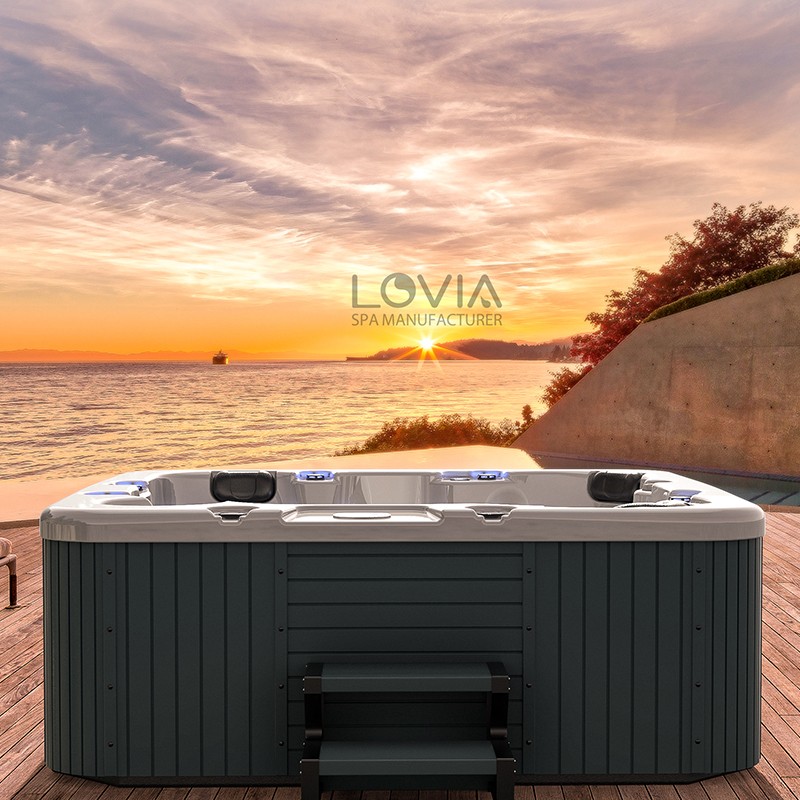
How to reduce the impact of chlorine in a whirlpool spa hot tub on the human body?
Although chlorine plays an important disinfecting role in water treatment, excessive chlorine exposure may have adverse effects on health. Therefore, the rational use of chlorine and taking corresponding preventive measures can effectively reduce the negative impact of chlorine on the human body.
1. Control the concentration of chlorine
Regularly testing and controlling the concentration of chlorine in the whirlpool spa hot tub is the key to reducing chlorine absorption. Generally speaking, the free chlorine concentration in a whirlpool spa hot tub should be kept between 3-5ppm (parts per million), which can effectively kill bacteria without causing excessive irritation to the human body. Excessive chlorine concentration is not only harmful to the human body, but also accelerates the corrosion of whirlpool spa hot tub equipment.
2. Improve ventilation
The use environment of the whirlpool spa hot tub should be well ventilated, especially when used indoors. By increasing air circulation, the accumulation of chlorine in the air can be reduced, reducing the risk of respiratory inhalation. If the whirlpool spa hot tub is used outdoors, chlorine is easily diluted by air, and the relative risk will be smaller.
3. Use chlorine-free alternatives
Although chlorine is the most common water treatment disinfectant, chlorine-free or low-chlorine water treatment products have gradually become popular in recent years. For example, bromine, as a substitute for chlorine, is less volatile in warm water and less irritating to the skin and respiratory tract. In addition, there are some mineral filtration systems and ultraviolet disinfection equipment that can keep water clean without using chemicals.
4. Appropriate soaking time
In order to reduce the absorption of chlorine through the skin, it is recommended to control the soaking time. Long soaking will not only increase the risk of chlorine absorption, but may also cause skin dryness. Therefore, it is recommended that each soaking time be controlled within 15-30 minutes to avoid prolonged exposure to chlorinated water.
5. Rinse the body after soaking
After using the whirlpool spa hot tub, it is recommended to rinse the body with clean water immediately to remove chlorine residues on the skin surface. At the same time, moisturizing cream can be used to moisturize the skin to avoid dryness and discomfort caused by chlorine irritation.
How do I start procurement with Lovia Spa?
To initiate your purchasing journey, simply contact our sales team via email or website form with your product interest, quantity, desired specs, and target market. We'll respond within 24 hours with a detailed quote, including factory price, options, shipping, certifications, and warranty. Once confirmed, we issue a pro forma invoice, receive deposit, begin production, and maintain open communication through each stage until delivery. Our transparent process, cheap pricing, and robust certifications ensure a seamless partnership.


